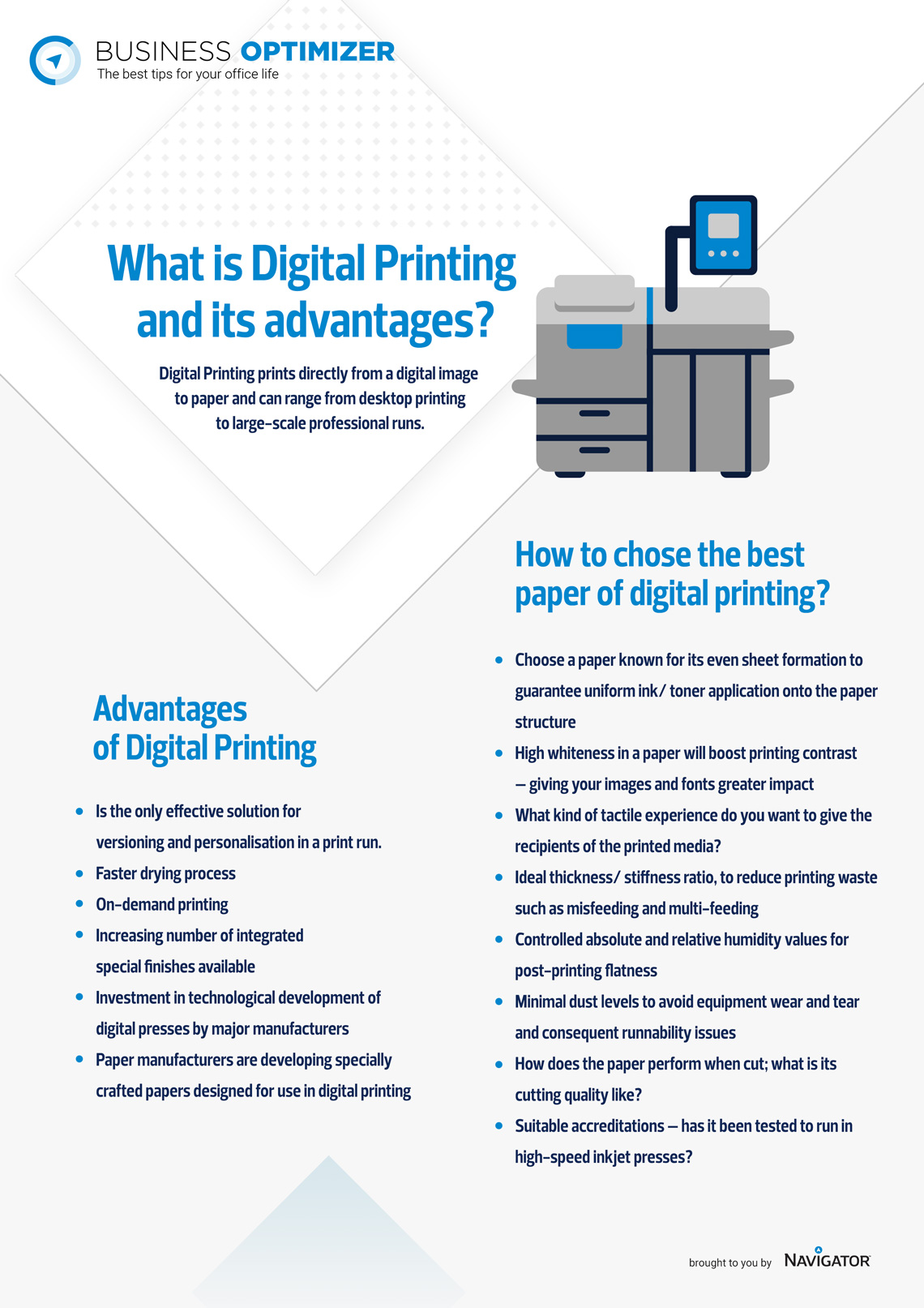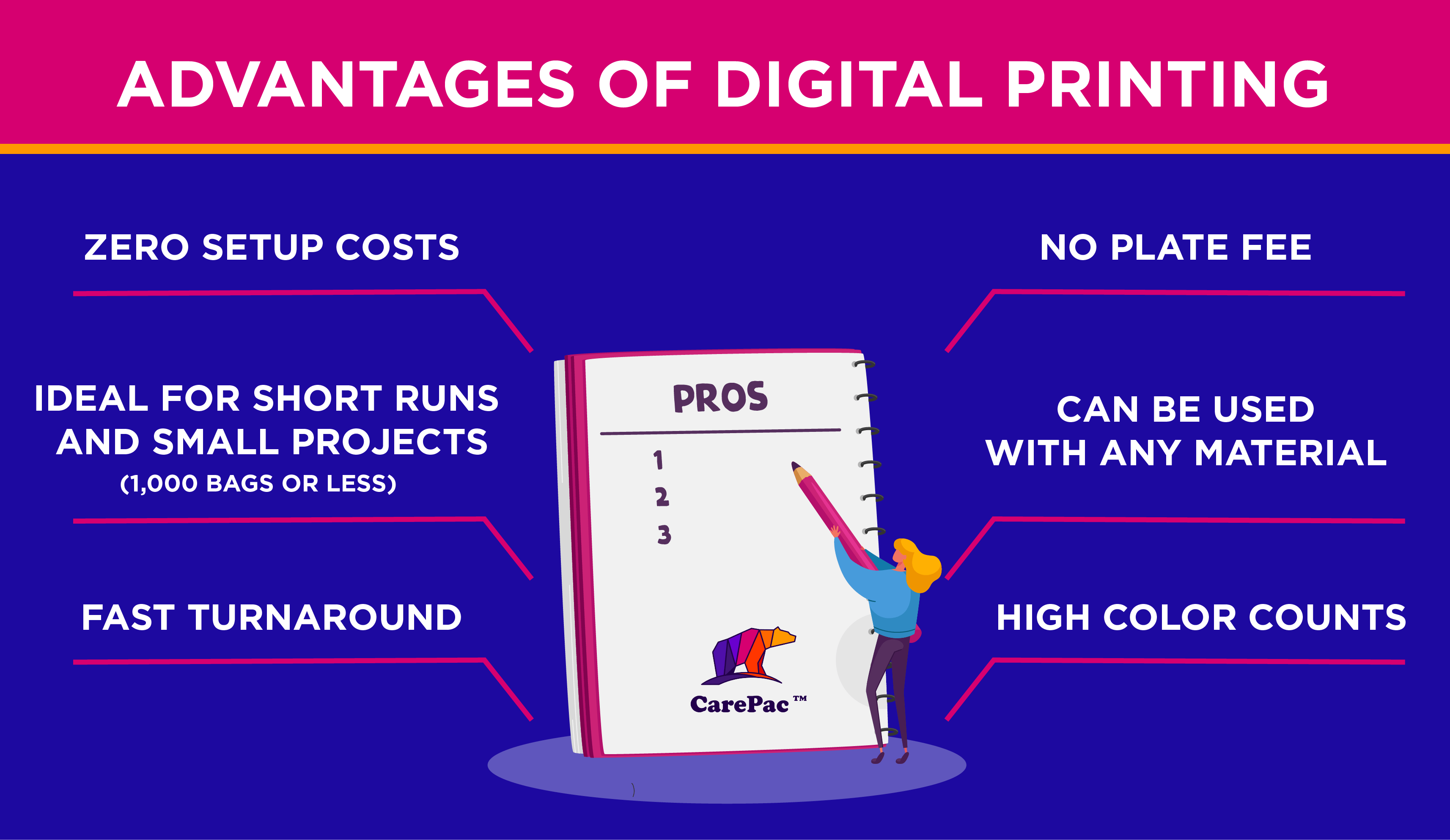Digital Printing - The Facts
Digital Printing - The Facts
Blog Article
The Buzz on Digital Printing
Table of ContentsFascination About Digital PrintingExcitement About Digital PrintingIndicators on Digital Printing You Should KnowSome Known Details About Digital Printing Digital Printing Fundamentals ExplainedSome Ideas on Digital Printing You Need To Know
Variable data printing, such as straight mail with personalized codes and addresses, is preferably matched for electronic printing. Digital quick printing only needs four steps of design, review, printing and binding to obtain whatever done. Digital fast printing has an exceptional advantage: print on demand.According to PMMI, electronic printing allows brand names and manufacturers to respond promptly to consumer demands while improving the supply chain, minimizing warehousing expense and waste, and enjoying faster time to market. That all noises fantastic, but exactly how does this technology do all that? The significant differentiator of these innovations is that there are no set up charges and no plates with digital printing.
Some Known Details About Digital Printing
This results in quicker turn-around time and decreases price when making use of electronic printing.
Digital printing is highly versatile, so it's easy to make modifications to the package design rapidly. It all goes back to the plates.
Much more stock can mean even more waste down the road. With traditional printing methods, short-run printing is just not possible. Due to the fact that a terrific style can make or damage your item, electronic printing continually produces high-grade, clear and vibrant graphics each time. Digital printing on versatile bags includes the bright, vibrant, and precise graphics that almost bid consumers to connect and touch them.
Digital printing is the process of printing digital-based photos directly onto a selection of media substrates. There is no need for a printing plate, unlike with countered printing. Digital documents such as PDFs or desktop computer posting data can be sent out straight to the digital printing machine to print on paper, picture paper, canvas, textile, synthetics, cardstock and other substratums.
An Unbiased View of Digital Printing
According to PMMI, electronic printing enables brand names and manufacturers to react swiftly to client needs while improving the supply chain, reducing warehousing expense and waste, and delighting in faster time to market. That all sounds fantastic, yet just how does this innovation do all that? The significant differentiator of these modern technologies is that there are no set-up charges and no plates with electronic printing.
According to Wikipedia, the biggest distinction in between electronic printing and standard techniques such as lithography, flexography, gravure, or letterpress is that there is no demand to replace printing plates in electronic printing, whereas in these analog printing techniques the plates are consistently changed. This causes quicker turn-around time and lowers expense when utilizing electronic printing.

Not known Incorrect Statements About Digital Printing
With standard printing techniques, short-run printing is just not possible. Since a fantastic layout why not try these out can make or damage your item, digital printing regularly creates top quality, clear and vibrant graphics each time.

According to PMMI, electronic printing permits brand names and producers to respond quickly to customer needs while enhancing the supply chain, lowering warehousing cost and waste, and delighting in faster time to market. That all sounds terrific, however how does this modern technology do all that? The significant differentiator of these modern technologies is that there are no set up costs and no plates with digital printing.
How Digital Printing can Save You Time, Stress, and Money.
According to Wikipedia, the best difference between electronic printing and typical methods such as lithography, flexography, gravure, or letterpress is that there is no demand to change printing plates in digital printing, whereas in these analog printing methods the plates are repetitively changed. This leads to quicker turnaround time and lowers expense when using digital printing.
Speedy manufacturing suggests getting your item to market much faster. It additionally means it's easier and faster to make changes later on, when you alter a learn this here now dish, add a SKU, or produce seasonal product packaging. Digital printing is very adaptable, so it's very easy to redirected here make changes to the bundle style rapidly. It all returns to the plates.

Unknown Facts About Digital Printing
Digital printing is the process of printing digital-based photos straight onto a range of media substratums. There is no demand for a printing plate, unlike with countered printing. Digital files such as PDFs or desktop posting files can be sent out directly to the digital printing press to print theoretically, photo paper, canvas, textile, synthetics, cardstock and various other substratums.
Report this page